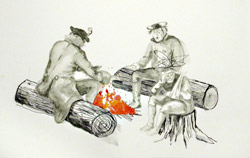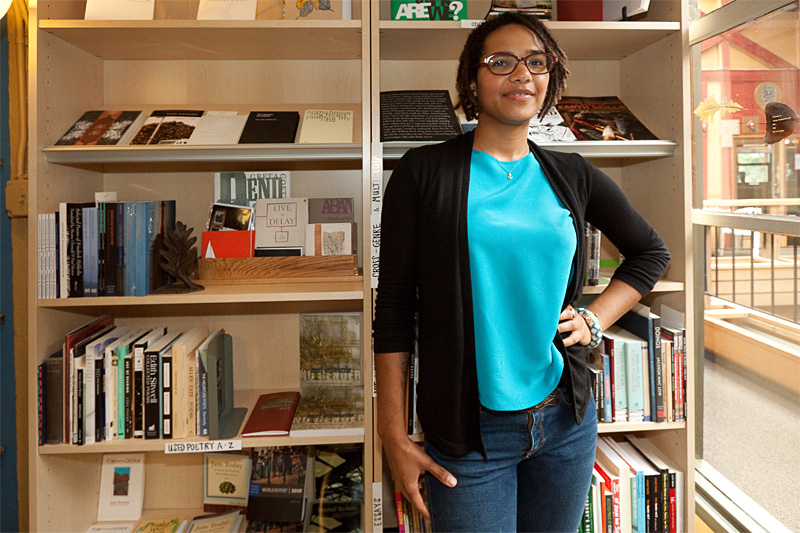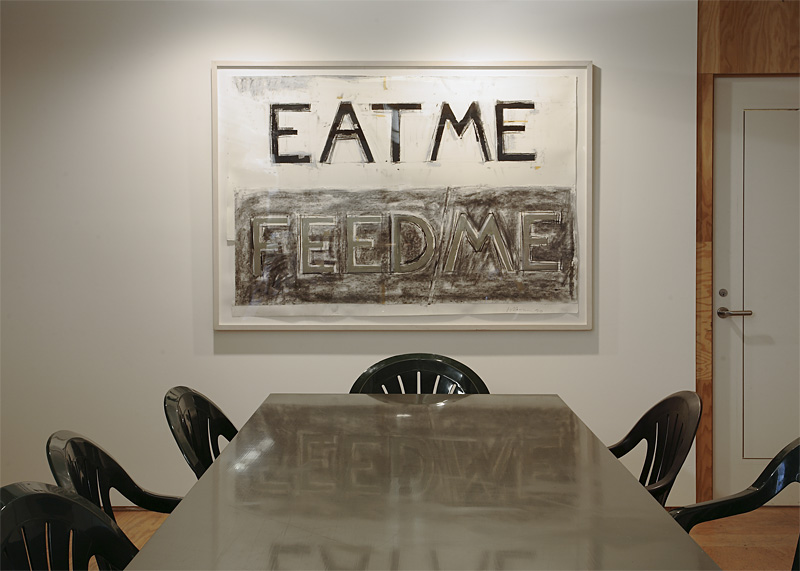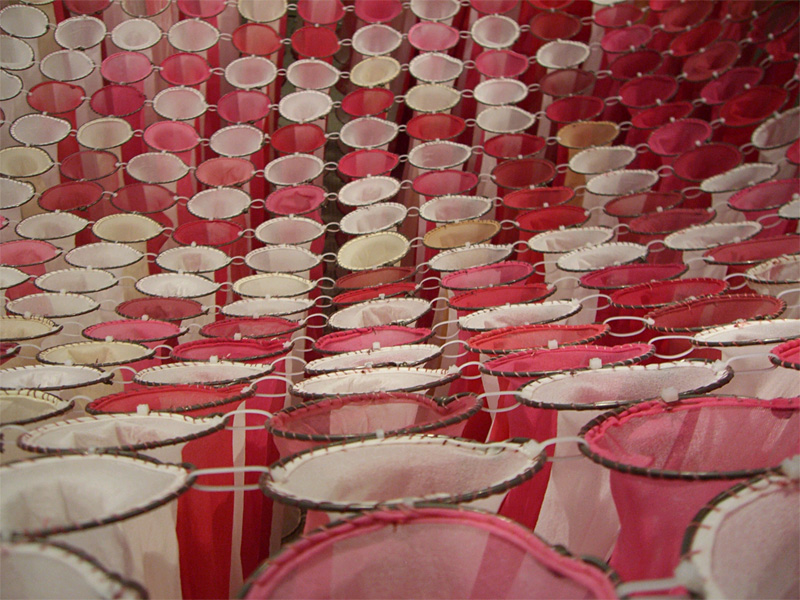Dawn Cerny’s work is playfully bookish. In her Gallery4Culture show last May, she used Walter Benjamin’s book The Arcades Project (a cultural history exploring the precursor to the mall) as a jumping-off point for a series of paintings and drawings depicting scenes such as an elegant garden party crashed by a pack of dogs. “An Artful Scheme of Happiness,” at Soil last spring (a collaboration with Alice Tippet), was a busy proliferation of drawings and paintings depicting the intricate details of an imagined eccentric millionaire. This time, in “For Our Readers,” her inspiration is Notes and Queries, an academic journal dating to the 1850s that, as the artist explains in her statement, is a “kind of ‘call and response’ forum for the scholar and layperson alike in the subjects of literature, the English language, history, lexicography, and antiquarianism.”
Still in print, the journal presents reader questions in the front (such as an inquiry about the origin and meaning of the word “culver”) and answers to a previous issue’s questions in the back. (“Culfre, culefre, or culufre, means dove in Anglo-Saxon…. From the dove’s timidity came the medæval culvertagium, and our word, ‘cowardice.'”) Cerny’s wall installation, composed of a set of delicate, exacting (and sometimes charmingly sloppy) drawings and watercolors, reproduces this sort of conversation in visual form—with built-in delays and miscommunications.
Her works on paper cover a whole wall, creating two loose-edged, rounded shapes that reach to about 6 feet, the lowest works spilling onto the floor. There are 63 pieces, interspersed with 63 blank slices of paper, the layout repeated in mirror image like a Rorschach test. According to gallery owner Catherine Person, the blank sheets serve as the questions, while the papers with figuration are the answers. They depict real and seeming historical figures—from Abraham Lincoln to soldiers in George Washington’s army to an anonymous young man dressed in the clothing of another era. The drawings are marked with engagingly idiosyncratic lines. Beneath one watercolor portrait of the 13th U.S. president, Cerny has written, “Millard Fillmore had really nice blue eyes. He was once threatened by a man with an axe.” A rendering of a gnarled stick reads: “Twice the size of a normal gun. The sad most dejected thing in the world.”
Cerny’s work seems inspired by the style of 19th-century illustration or items one might find in an ephemera shop, though it’s not nearly so romantic. These drawings seem somehow precomputer, flaunting the physicality of their making and materials and showing off the artist’s hand. The way the show is hung reinforces this tactile approach, each piece of paper pierced with two pins and stuck to the bare wall. A few drawings are written with notes that remind us that a drawing is always an experiment, a physical experience that might not always come out well, or as it was intended.
That’s the case with The Story of Balden. “This drawing makes the other ones look better,” Cerny writes. And it does, this penciled young man on yellow lined paper with his back to us, shoulders hunched, seen and caught. And messy. In a wall of (mostly) exactingly precise portraits, this piece stands out. The text, written not in a perfect hand but in a childishly loopy one, underscores a consistent element of play. For this and other pieces, the text itself is a way to get into the work, a way to slow down the looking process, while also suggesting another avenue of thought.
The watercolor portrait depicting a pair of Abraham Lincolns in profile is more stately, as well as more carefully rendered—yet, somehow, the fact of the double seems to be poking fun at this revered historical icon. Are we looking at a young Lincoln and an older one, perhaps? Locating a wisp of gray at the top of the right-hand Lincoln’s head, one wonders: Could that be a comb-over, exposed by a gust of wind? And what’s the question for which this double image is the answer? We’re left to deduce for ourselves the meaning of the half-finished conversation. Just as I’m sure the disembodied answers in Notes and Queries must seem humorous precisely because of their lack of context, these drawings behave in the same way. A little questioning, a little lost, sometimes idiosyncratic, and yet each charmingly complete on its own.
In Cerny’s previous shows, sometimes the work was difficult to read, precisely because there was such a crowd of it. Here, the blank papers give the populated wall a bit of breathing room. The judicious use of negative space seems to mimic the effect of delayed time, slowing down our reading of the drawings and allowing for an easier linger among all the questioning answers.








